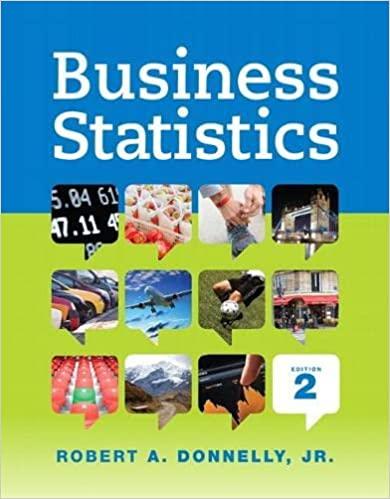Question
The uncertainties in an experiment can be broadly classified in two categories: random uncertainties and systematic errors. These two classifications have different sources and different
The uncertainties in an experiment can be broadly classified in two categories: random uncertainties and systematic errors. These two classifications have different sources and different effects on experimental results. Random uncertainties are any effect that causes the measurand to change in a random way. For example, when you are using a precise balance to measure mass you might notice that the last digit on the display fluctuates. Any repeated measurement that gives slightly different results each time is likely to be subject to random uncertainty. Measurands with random uncertainty have an average value. Any individual measurement may be either above or below the average value. Random uncertainties are unavoidable and not generally very harmful to the experiment since the average value of the measurand is not affected. Random uncertainties cause measurements to be imprecise, but they may still be accurate. Systematic errors are much more damaging to experiments. In a systematic error, some flaw in experimental design, equipment, or the experimenter's technique causes the measurand to be consistently high or consistently low. For example, before you use a precise balance to measure mass you need to tare the balance, or set its zero point. If the tare is not applied correctly, the balance will not read 0 kg when there is no mass on it and every measurement using the balance will be shifted from its correct value. Systematic errors can also occur if the experimenter is biased, such as if they always round up but never round down or if they try to read a thermometer without adjusting their eye level to the level of the liquid in the thermometer so there is parallax affecting their reading. Because systematic errors are biased in one direction, consistently high or low, the experimental results will also be consistently incorrect. Systematic errors cause measurements to be inaccurate.
1. Consider each of the following experimental issues. Classify them as random uncertainties or systematic errors. I. The experimenter is using a caliper to measure the radius of a shaft, but there is a layer of tape on the jaws of the caliper. II. A meteorologist is measuring a region's insolation (the amount of sunlight received). Clouds occasionally block the detector from the sunlight. III. A rocket engineer does not account for air resistance. IV. A radioactive source produces x-rays that diffract off of a crystal sample. The rate at which the x-rays are detected fluctuates.
Step by Step Solution
There are 3 Steps involved in it
Step: 1

Get Instant Access with AI-Powered Solutions
See step-by-step solutions with expert insights and AI powered tools for academic success
Step: 2

Step: 3

Ace Your Homework with AI
Get the answers you need in no time with our AI-driven, step-by-step assistance
Get Started


